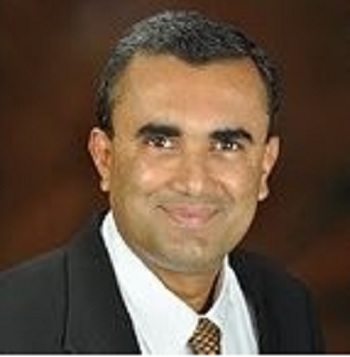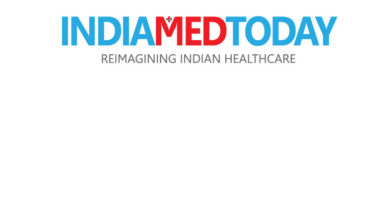
The issues of cost, understaffing, efficiency and quality in the delivery of radiologic services can be addressed simultaneously. Arjun Kalyanpur, CEO, Teleradiology Solutions reveals more
Much has already been written and said about the benefits of artificial intelligence (AI) in healthcare. Within healthcare, radiology frequently gets primary attention.
The three reasons for this are
• Radiology has long been a digital medical discipline, where images are essentially binary data, amenable to digital analysis
• Radiology is primarily diagnostic in its scope, and triage workflows allow for effective application of AI technologies within the framework of early detection/diagnosis and
• AI services can be rendered on the cloud and can deliver significant value even over a wide area network when the radiologist is remote from immediate patient contact (read Teleradiology).
From a business perspective, the appeal of the radiology-AI combination is related to the extraordinary potential of a transformational technological disruption that can simultaneously address the issues of cost, understaffing, efficiency and quality in the delivery of radiologic services (the latter are all unfortunate realities in today’s world of major radiologist shortages). The investor storyline is also psychologically compelling given as it ties in with futuristic imagery of the man-machine combine and its potential to transcend traditional human limitations with the bionic capabilities of the AI-supported super-radiologist.
• But cutting through these metaphors, what is the essence of the argument of why radiology needs AI to achieve its maximum potential in the future:
• Increasing volume and complexity of data – The primary factor resulting in radiologists overwork is related to the overwhelming complexity and sheer volume of radiologic data that today assaults the senses of the radiologist. The analogy is of a river in spate with global climate change resulting in melting glaciers that further increase the magnitude of the deluge. A CT scan of the brain performed in a situation of suspected stroke would two decades ago have contained 100-odd images. Today combined with perfusion images to detect areas of the brain with decreased blood flow, along with angiographic images that locate the site of the vessel blockage of the artery that supplies the corresponding segment of the brain, the scan can run into 2000 images (a factor of 20x). Just as childrens’ minds are today overstimulated by social media and the information industry, so too the minds of radiologists are today under assault by a tsunami of imaging data.
• Radiologist shortage and burnout, more emergency applications- The field of radiology was once regarded by its envious peers as a speciality where a physician could make a comfortable living without having to stay up at night, and to some extent, this resulted in it attracting some of the brightest minds in medicine. Today the radiology brand is transformed into one where radiologists are overworked and stressed, and the propensity for top medical graduates to enter this space is progressively diminished. As radiology has become ever more sophisticated and versatile it has in parallel become the victim of its success, with 24×7 utilisation skyrocketing. Today in less than a minute a CT scan can accurately determine whether a patient has pulmonary thromboembolism, or lifethreatening clots in the lungs, which previously needed much more complex and labour-intensive imaging. Today, the constraint in the analysis of this life-saving imaging is the radiologist’s limited time.
• Many radiology tasks are repetitive and visual. Radiology is a visual interpretive speciality and the primary job of the radiologist has to date been the detection of the abnormality on a scan. As it turns out, the blips on a radiologic image that constitute tumour or infection or aneurysm can be coded into bits and bytes, and this part of the radiologist’s job can be more effectively done by a computer algorithm. Also, this is arguably the least rewarding part of radiology. Bringing AI into this space is akin to liberating the radiologist’s higher neuronal pathways by automating the reflexes.
• Preserve radiologic expertise across generations- A recent Hollywood movie had the protagonist, played by Johnny Depp, capturing his brain’s activity onto a computer network so that he could continue to interact and communicate with his wife even after this death. While this is fiction, it is not that far removed from reality. In Radiology, AI essentially allows for us to capture the genius elements of radiologists’ thought patterns into an algorithm and preserve them beyond his or her lifetime for posterity, further incorporating them into a universal reality of image analysis. This is where AI in radiology transcends medicine, science or business into the realm of something mystical, profound and eternal in its scope.
• Need for a cross-speciality analysis beyond radiology – The radiologist has always needed to know in-depth anatomy and understand physiology, combined with molecular imaging/biochemistry as well. Additionally, understanding genomics, genetics, complex histopathology/ histochemistry, biomechanics etc. all considerably enhance the skill ofthe radiologist but are arguably hard to achieve in a single radiologist’s lifetime, or over a generation. If we are to achieve the best possible analysis of a PET-CT scan for a complex brain tumour, a dynamic contrast-enhanced MRI for an unusual variant of rectal cancer, a Musculoskeletal MRI for subtle myonecrosis (muscle injury), or a MUGA for cardiac dysfunction, it is clear that this exceeds the capacity of a single human intelligence. On the other hand, the combination of man and machine creates a potent synergy that allows us to magnify or amplify the abilities of both, and to transcend limited human capabilities with superior bionic ones. And therefore as Dr Langlotz of Stanford University’s tweet for all eternity goes, ‘Radiologists who use AI will replace those who don’t.’
The Wright brothers proved to us at Kitty Hawk that we could do the impossible and fly, as long as we developed the correct machine to enable us to do this. Let us aspire to a brave new world in which we develop the correct algorithms that allow us to fly radiologically to arrive instantaneously at the precise diagnosis, to transform healthcare, and to forever change the definition of what constitutes preventable mortality.


